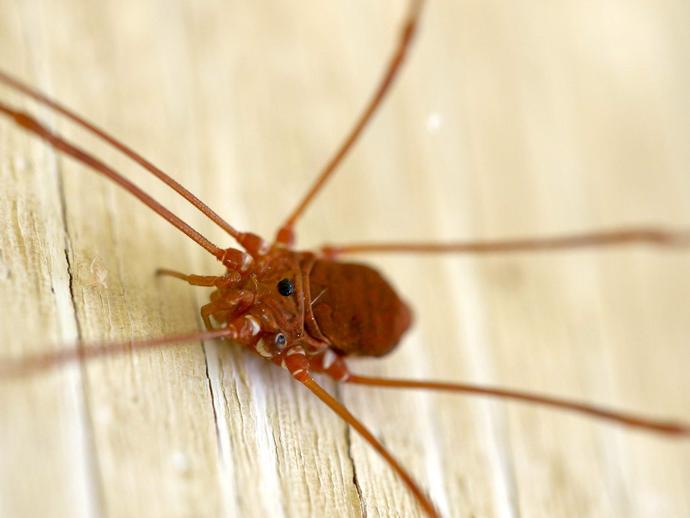March 27, 2021
We're reaching into the archives for today's #BenInNature update presented by our friends at Carter Bank & Trust! The following post was originally published on June 5, 2020.
This is a harvestman, better known as "Daddy Long-Legs." These little critters belong to the order Opiliones, and you'd be hard-pressed to find someone who isn't familiar with them. There are more than 6,500 described species of harvestmen worldwide, and they can be found on every continent except Antarctica! While you can find harvestmen throughout much of the year in the U.S., they're most common in autumn, which is likely how they got the common name "harvestmen."
Because they're so familiar and common, there are a few misconceptions and urban legends that have sprung up around these little guys. The first misconception is that harvestmen are spiders. While both harvestmen and spiders belong to the class Arachnida, they aren't all that closely related. The main giveaway is that spiders have two body segments: the cephalothorax (the "head" which the legs are connected to) and the abdomen. In the case of harvestmen, these two body segments are fused together into one piece. Additionally, while spiders have eight eyes, harvestmen generally have just two, which are contained in a structure called an "ocularium" (this is the black spot in the center of the "head," as seen in this macro shot).
The biggest urban legend about harvestmen is one you've likely heard before. As the story goes, harvestmen are secretly the most venomous creatures on Earth, but their fangs are too small to bite you. It's a good story, but it's just a story. There is no known species of harvestman that possesses venom, and their chelicerae (mouthparts) aren't hollowed-out fangs; instead, they're more like little claws that the harvestman uses to eat. When it comes to defending themselves, harvestmen rely on camouflage, pretending to be dead, running away, exuding foul-smelling chemicals, or even shedding a leg! In fact, you'll notice that this harvestman is missing a leg, which it may have shed to escape a predator. A harvestman's leg will continue twitching for anywhere from a minute to an hour after it has been dropped, which can serve as an excellent distraction while it flees to safety.
Unfortunately, losing even one leg can greatly inhibit these critters, and not just because it makes it harder to get around. Harvestmen have poor vision and use their legs as sensory organs to help them find food. If you ever watch a harvestman eating (some species are omnivores, eating small insects and plants, while others are scavengers) you might notice that when it has finished its meal, it cleans off each of its legs by drawing them through its mouthparts!
While some people find harvestmen creepy, you can rest assured that they're nothing to be afraid of. They can't hurt you, they won't bite you, and they can barely even see you!
ABOUT #BenInNature
Social distancing can be difficult, but it presents a great opportunity to become reacquainted with nature. In this series of posts, Administrator of Science Ben Williams ventures outdoors to record a snapshot of the unique sights that can be found in the natural world. New updates are posted Monday - Friday, with previous posts highlighted on the weekends. This series of posts is made possible thanks to the support of VMNH Corporate Partner Carter Bank & Trust (www.cbtcares.com).
NATURE PHOTO IDENTIFICATIONS
If you discover something in nature that you would like help identifying, be sure to message us right here on Facebook with a picture (please include location and date of picture) and we'll have our experts help you identify it!

 Hours & Admissions
Hours & Admissions Directions
Directions

